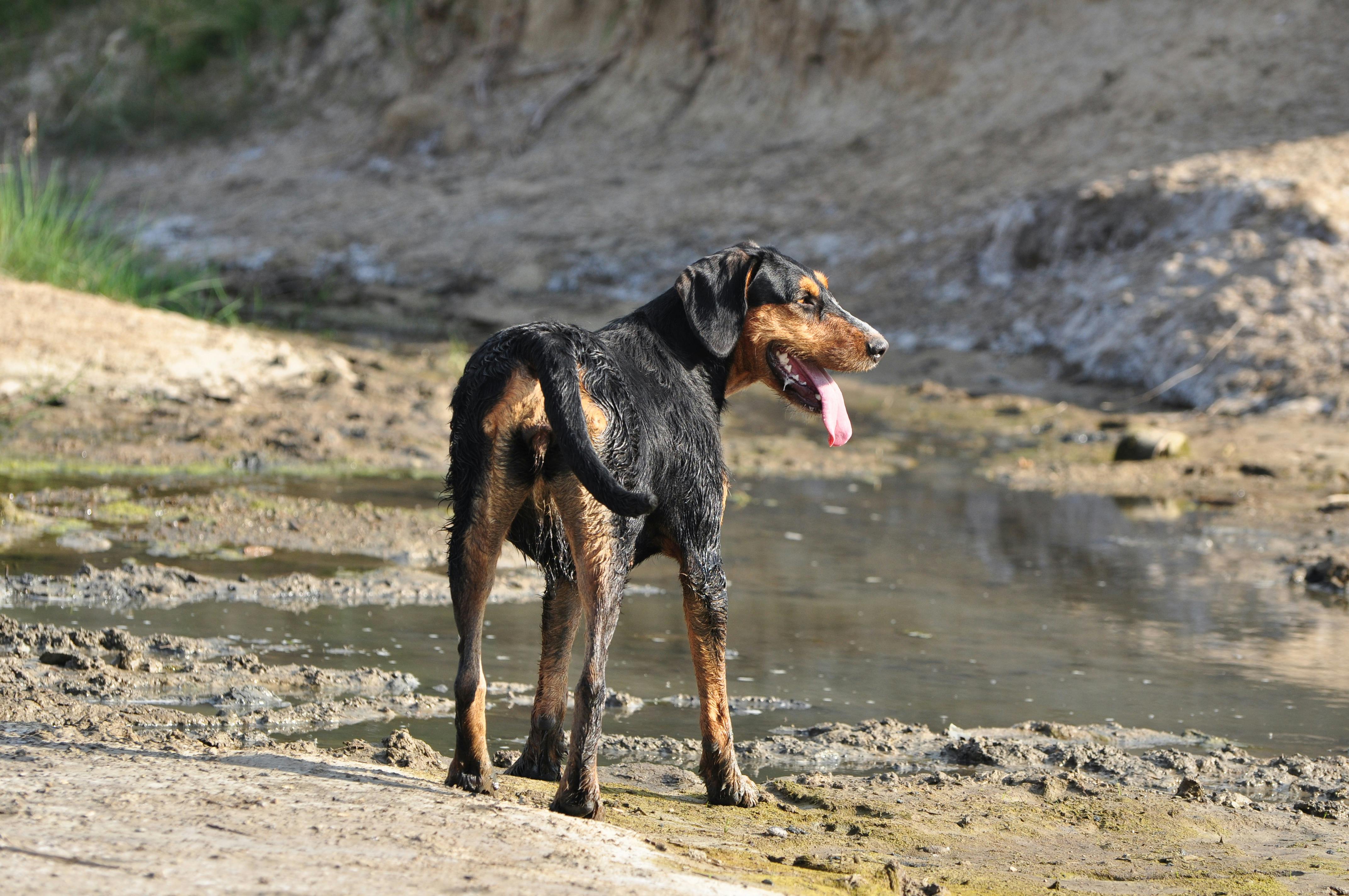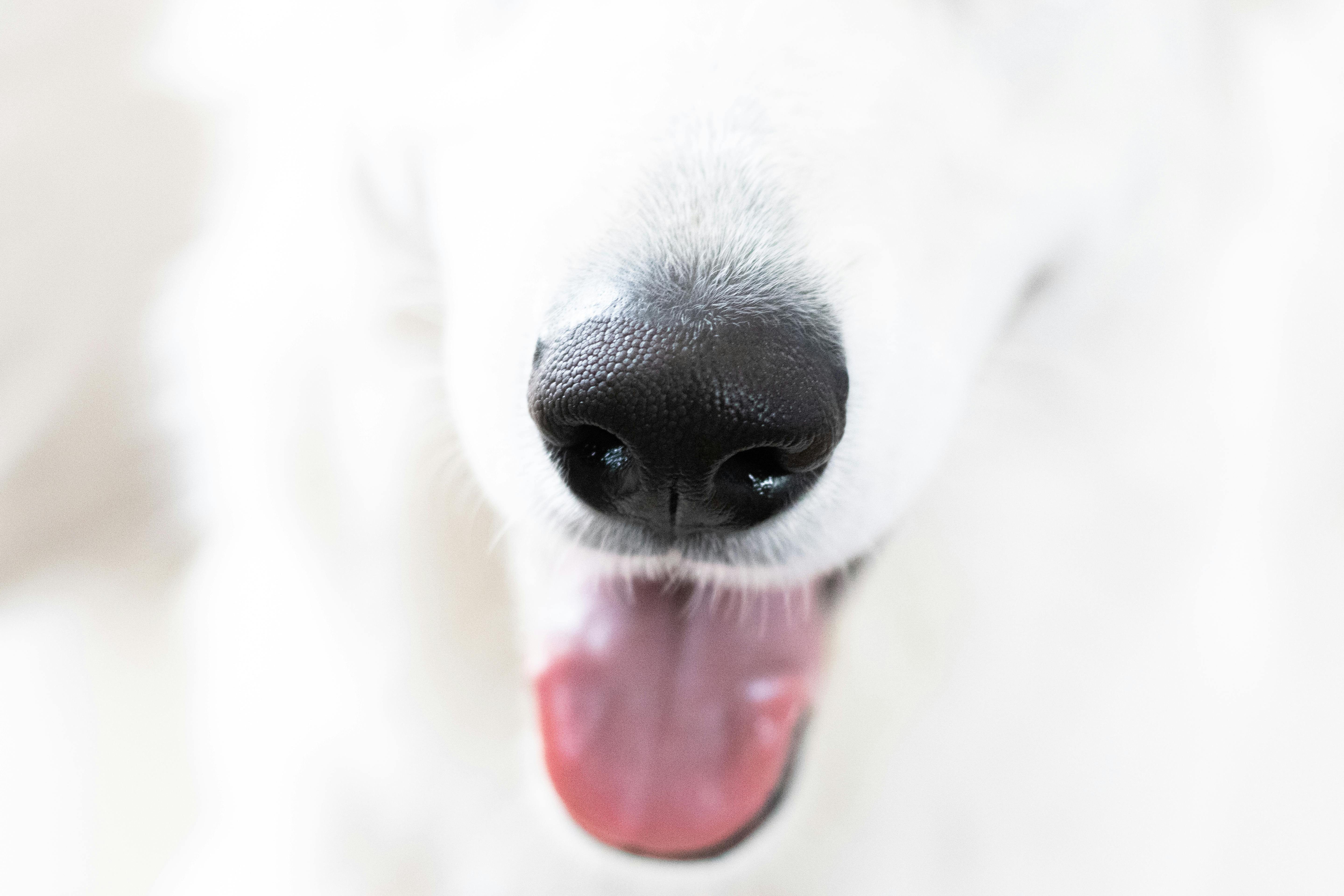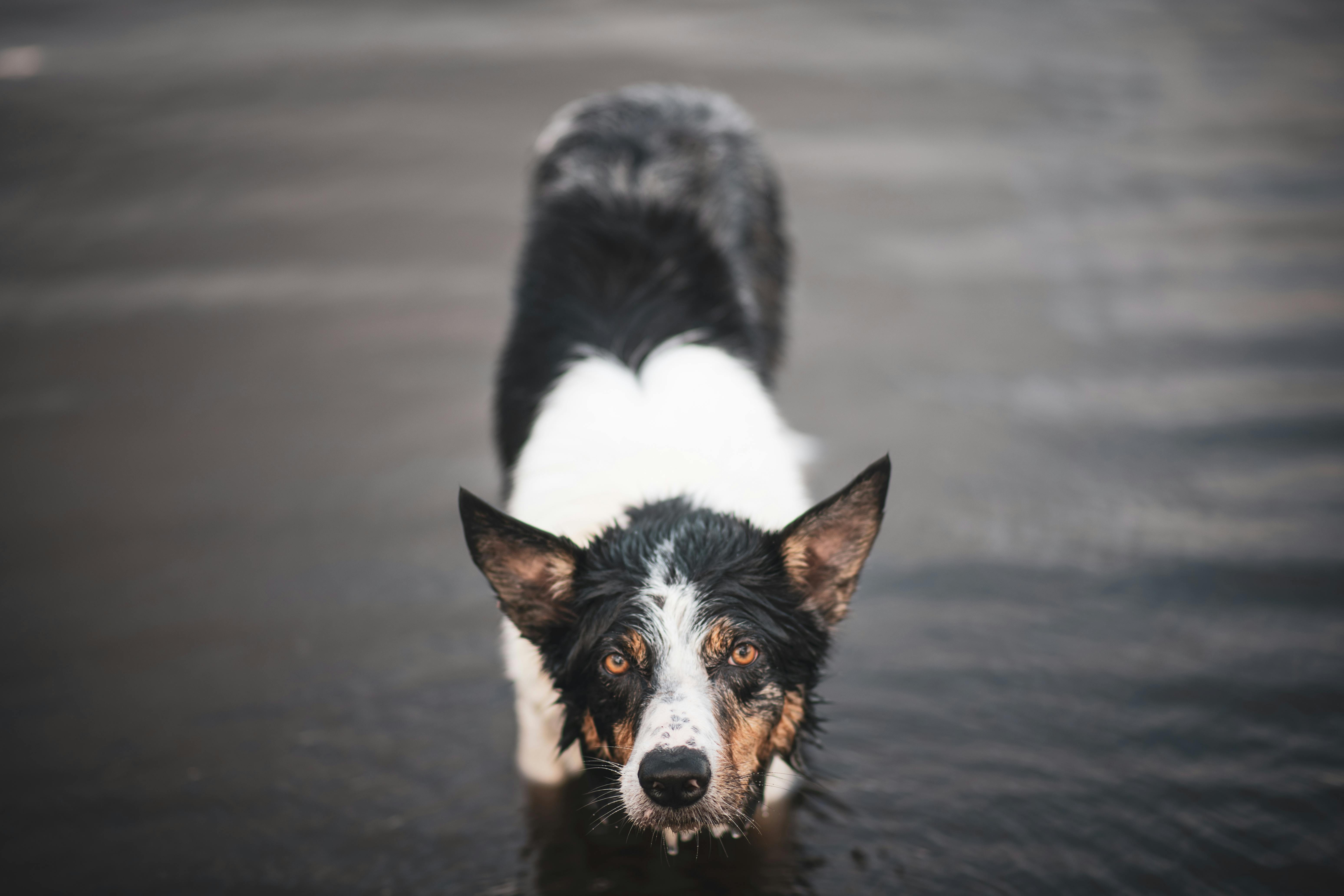Have you ever wondered, why do dogs have wet noses? This intriguing characteristic of our furry companions sparks curiosity among pet owners and animal lovers alike. The answer is not just about dog health; it’s a fascinating blend of biology and behavior that can reveal so much about your pup. A wet nose does more than feel cool to the touch; it plays a crucial role in a dog’s sense of smell. Did you know that a dog’s nose is packed with moisture to enhance its olfactory abilities? This is just one of the reasons behind the question: why do dogs have wet noses? Dive into the science and discover the fascinating reasons behind this phenomenon. From temperature regulation to emotional signaling, the wetness of a dog’s nose is a gateway to understanding their well-being and happiness. So, what else can a wet nose tell us about our beloved pets? Uncover the secrets and learn how this simple feature connects to their instincts and health. Get ready to explore the captivating world of canine anatomy and behavior that makes your dog so special!
The Science Behind Canine Noses: Why Are Dogs’ Noses Always Wet?

Dogs are truly amazing creatures, and one of the most fascinating parts about them is their noses. If you’ve ever wonder why dogs have wet noses, you’re not alone! This common question has intrigued both pet owners and scientists alike. Wet noses are not just random features; they serve vital purposes. Let’s explore the science behind canine noses and uncover the reasons why they are always so moist!
The Anatomy of a Dog’s Nose
First off, the anatomy of a dog’s nose is quite complex. It’s not just an organ for smelling; it has multiple functions. Here’s a quick breakdown of what makes a dog’s nose special:
- Olfactory Receptors: Dogs have up to 300 million olfactory receptors in their noses, compared to about 5 million in humans. This allows them to detect scents at incredibly low concentrations.
- Nasal Turbinates: These are tiny, scroll-like bones inside the nose that help in filtering and humidifying air. They also play a role in scent detection.
- Moisture Production: Dogs’ noses are lined with mucous membranes that continually produce moisture.
Why Are Dog Noses Wet?
Now, let’s dive into the reasons why dog noses are wet. Wetness is not just a quirk; it has several important functions:
Enhanced Smell: When a dog’s nose is moist, it can trap more scent particles. The moisture helps to dissolve the scent, allowing the olfactory receptors to pick it up more effectively.
Temperature Regulation: Dogs don’t sweat like humans do. Instead, they often rely on their noses to help regulate their body temperature. A wet nose can help cool them down.
Health Indicator: The condition of a dog’s nose can provide insights into its health. A dry or cracked nose can sometimes indicate dehydration or illness.
Scent Communication: Dogs use their noses to communicate with each other. The moisture on their noses helps pick up pheromones and other scent signals from the environment.
The Role of Environment
Dog noses are also influenced by environmental factors. For instance, humidity levels can affect how wet a dog’s nose feels. Here’s what you need to know:
- High Humidity: In humid weather, noses may feel wetter because the moisture in the air helps keep them hydrated.
- Dry Conditions: In dry or windy weather, dogs may have drier noses, which isn’t necessarily a bad thing but can indicate they need more hydration.
Historical Context of Dog Noses
Historically, dogs have been bred for their sense of smell. From hunting dogs to search and rescue, their noses have played a crucial role in various human activities. For example:
- Bloodhounds: Known for their incredible tracking ability, they are often used in search and rescue missions.
- Detection Dogs: Trained to sniff out drugs, explosives, and even diseases, their noses have saved countless lives.
Fun Facts About Dog Noses
Here are some interesting tidbits about canine noses that you might not know:
- Unique Patterns: Just like human fingerprints, each dog’s nose print is unique. This means that it can actually be used for identification purposes!
- Color Variations: Dog noses can come in various colors, including black, brown, and pink, depending on the breed and genetics.
- Cold or Warm Noses: A cold nose doesn’t always mean the dog is sick; it can simply be a characteristic of their breed or environment.
Practical Examples
If you’re a dog owner, you might be curious about how to care for your dog’s nose. Here are some tips:
- Hydration: Ensure your dog has access to fresh water at all times. This can help maintain moisture levels in their nose.
- Check for Cracks: Regularly inspect your dog’s nose for any cracks or dryness. If you notice persistent issues, consult a veterinarian.
- Environmental Awareness: Be mindful of extreme weather conditions. If it’s too hot or cold, consider keeping your dog inside or providing protection.
So, the next time you wonder why do dogs have wet noses, remember that it’s all about enhancing their sense of smell, regulating temperature, and communicating with their environment. Dogs rely on their noses much more than we do, making them truly remarkable animals. The moistness of their noses is just another testament to how well-adapted they are to their roles as companions and working partners in our lives.
5 Fascinating Facts About Your Dog’s Moist Nose You Never Knew

Dogs are often considered man’s best friend, and one of their most endearing characteristics is their moist noses. But have you ever stopped to wonder why do dogs have wet noses? There’s a lot more to this peculiar trait than meets the eye. Here are five fascinating facts that might surprise you about your dog’s nose.
1. A Natural Cooling Mechanism
Dogs don’t sweat like humans do. Instead, they mainly rely on their noses for thermoregulation. When a dog’s nose is wet, it helps to cool them down. The moisture evaporates, which can create a cooling effect on their body. This is super important, especially during hot weather when dogs are at risk of overheating. So, if your pup’s nose feels damp, it could mean they are regulating their body temperature.
2. Enhanced Sense of Smell
A wet nose is also linked to a dog’s incredible sense of smell. The moisture helps to capture scent particles from the air. Think about it—when you have a cold and your nose gets stuffy, you can’t smell anything! Similarly, a dry nose can hinder a dog’s ability to pick up scents. According to experts, dogs have about 220 million scent receptors in their noses, compared to a human’s 5 million. That’s why their noses are always moist, to maximize their sniffing power!
3. Communication Tool
Dogs use their noses for more than just smelling. They also communicate with other dogs and humans through scent. A dog’s wet nose can signal a variety of emotions or states. For instance, a wet nose can indicate that a dog is excited or happy to see you. Conversely, a dry nose can mean they are feeling unwell or stressed. So, next time your dog greets you with a cold, damp nose, it might just be their way of saying, “Hey, I’m happy to see you!”
4. Health Indicators
Believe it or not, the moisture level of a dog’s nose can indicate their overall health. A healthy dog typically has a moist, cool nose, while a dry or warm nose could signify a problem. Here’s a quick list of what different nose conditions might mean:
- Moist & Cool: Healthy and happy dog.
- Dry & Warm: Possible fever or dehydration.
- Cracked or Chapped: Potential skin issues or allergies.
- Excessively Runny: Might indicate allergies or an infection.
Of course, if you notice any significant changes in your dog’s nose, it’s always best to consult with a vet for proper diagnosis.
5. Evolutionary Advantage
The wet nose trait likely has evolutionary roots. Dogs are descendants of wolves, who relied heavily on their sense of smell for hunting and survival. The moist nose helps to enhance their olfactory abilities, which would be essential for tracking prey in the wild. As dogs evolved alongside humans, their wet noses have remained a key feature that aids in their ability to interact with their environment and us.
Summary of Fascinating Nose Facts
- Dogs’ noses help them cool down by evaporating moisture.
- A wet nose enhances their sense of smell, making them excellent sniffers.
- Wet noses can indicate a dog’s emotions and state of well-being.
- The moisture level in a dog’s nose can serve as a health indicator.
- Evolutionarily, wet noses have helped dogs survive and thrive.
In conclusion, the moisture on your dog’s nose is not just a cute quirk; it’s a vital part of their biology, communication, and health. So, the next time you pet your furry friend, take a moment to appreciate that wet nose—it’s doing a lot more than you might think! Whether it’s helping them cool down or sniff out the best places to dig, your dog’s moist nose is an incredible feature that deserves some admiration.
Is a Wet Nose a Sign of a Healthy Dog? Unveiling the Truth

Is a Wet Nose a Sign of a Healthy Dog? Unveiling the Truth, Why Do Dogs Have Wet Noses? Discover The Fascinating Reasons!
When you think about dogs, one of the first things that probably come to mind is that cold, wet nose. Many people often wonder what does this mean? Is a wet nose a sign of a healthy dog? Lets dive into some interesting facts to understand the real reasons behind those snouts that seem to be perpetually damp.
The Science Behind Wet Noses
Dogs have wet noses mainly because of a few reasons that are both fascinating and practical. First of all, a dog’s nose is rich in mucous glands. These glands help regulate their sense of smell, which is incredibly important for dogs. A wet nose can help capture scent particles in the air, making it easier for dogs to detect smells. Here’s a quick look at why a dog’s nose is often wet:
- Thermoregulation: Dogs don’t sweat like humans do. Instead, they rely on their noses to help cool themselves off. A wet nose helps with evaporative cooling.
- Enhanced Smell: The moisture on a dog’s nose helps to absorb scent molecules, enhancing their olfactory senses. This is why dogs are often used in search and rescue operations.
- Health Indicator: Generally, a moist nose can indicate that a dog is healthy, although it’s not the only sign.
Is a Wet Nose Always a Good Sign?
It’s important to understand that while a wet nose is often associated with health, it’s not a definitive indicator. A dog can have a wet nose and still be sick. Conversely, a dry nose does not automatically mean your dog is unwell. Various factors can lead to changes in nose moisture:
- Environmental Conditions: Dogs may have drier noses in the winter or in dry climates.
- Age: Older dogs may experience changes in their nose moisture.
- Health Issues: Conditions like fever, dehydration, or allergies can affect the moisture level of a dog’s nose.
Some health issues to watch for include:
- Allergies: Can cause nasal dryness or irritation.
- Infections: Often lead to changes in moisture levels.
- Fever: May result in a warm, dry nose.
Common Misconceptions About Dog Noses
There are plenty of myths surrounding dog noses that can lead to confusion. Here are some common misconceptions:
- Wet Nose = Healthy Dog: Not always true. While it can be a good sign, it isn’t the only measure of health.
- Dry Nose = Sick Dog: A dog may simply be dehydrated or overheated, not necessarily ill.
- Only Certain Breeds Have Wet Noses: All dogs can have wet noses, regardless of their breed.
Historical Context of Dog Noses
Historically, dogs have been bred for various tasks where their sense of smell was crucial. From hunting to herding to search-and-rescue, a moist nose was advantageous for capturing scents. Ancient cultures recognized the importance of a dog’s ability to smell. For example, in Ancient Egypt, dogs were often depicted in art, showcasing their role as hunters and companions.
What to Do If Your Dog’s Nose Changes
If you notice a change in your dog’s nose moisture, it’s helpful to observe other signs of health, such as:
- Changes in appetite
- Lethargy
- Coughing or sneezing
If you see persistent changes in your dog’s nose along with other symptoms, it’s always a good idea to consult with a veterinarian.
Fun Facts About Dog Noses
- A dog’s sense of smell is 10,000 to 100,000 times more sensitive than humans.
- Some breeds, like Bloodhounds, have an incredible ability to track scents over long distances.
- Dogs have a unique nose print, much like human fingerprints, that can be used for identification.
In conclusion, while a wet nose can often be a sign of a healthy dog, it’s not the only factor to consider. Understanding the reasons behind a dog’s moist nose and recognizing the signs of health can help pet owners take better care of their furry friends. Always keep an eye on other behaviors and consult a vet if any concerns arise. Dogs truly are fascinating creatures, and their noses are just one of the many things that make them special!
The Role of Dog Noses in Scent Detection: Why Wetness Matters

Dogs have a amazing ability to smell things. Ever wonder why this is? Well, it all start with their noses. Wet dog noses play a significant role in their ability to detect scents. You may have notice how often dogs sniff around or how they can find things we can’t. Let’s dive into the fascinating world of dog noses and discover the reasons behind their wetness and its importance in scent detection.
Why Do Dogs Have Wet Noses?
Wet noses are not just an adorable feature; they serve important functions. Here are some reasons why dogs have wet noses:
Enhanced Scent Detection: The moisture on a dog’s nose helps to trap scent particles from the air. This increases their ability to detect smells. When the nose is wet, it picks up more scent molecules, allowing dogs to identify different odors better.
Cooling Mechanism: Dogs don’t sweat like humans do. Instead, they rely on their noses to help regulate their body temperature. The moisture on their noses helps cool them off, especially on hot days.
Communication Tool: Dogs use their noses to communicate with other dogs. A wet nose can indicate excitement or stress, and helps them to gather information about their surroundings and other animals.
Health Indicator: A dog’s nose can also be an indication of their health. A healthy dog typically has a wet and cool nose, while a dry or warm nose can sometimes indicate illness.
The Science Behind Wet Noses
The wetness of a dog’s nose comes from a mix of mucous and saliva. This combination helps to enhance their sense of smell. Here’s how:
Mucous Production: The mucous membranes of a dog’s nose produce a thin layer of mucus. This layer captures scent particles floating in the air.
Saliva Contribution: When a dog licks its nose, the saliva adds to the moisture, making it even more effective for scent detection.
Olfactory Receptors: Dogs have about 220 million olfactory receptors in their noses, compared to humans who have about 5 million. The wetness helps to maximize the effectiveness of these receptors.
Historical Context of Dogs’ Sense of Smell
The domestication of dogs began thousands of years ago, and humans quickly recognized their exceptional sense of smell. Historically, dogs have been used for various purposes, including:
Hunting: Humans relied on dogs to find and track game due to their incredible scenting abilities.
Search and Rescue: Dogs are invaluable in search and rescue missions, using their noses to locate lost persons or victims of disasters.
Detection Work: Law enforcement agencies utilize dogs for detecting drugs, explosives, and even certain medical conditions like diabetes or seizures.
Why Wetness Matters in Scent Detection
Wetness is crucial for several reasons:
Increased Surface Area: The more moisture on a nose, the larger the surface area for scent particles to adhere to. This allows dogs to pick up on smells more easily.
Chemical Interaction: Certain scent molecules are more easily absorbed by moisture. This chemical interaction enhances the dog’s ability to identify various scents.
Faster Processing: Wet noses can help dogs process smells more quickly. This is vital when they are tracking a scent or reacting to environmental stimuli.
Comparisons: Dogs vs. Other Animals
While dogs are known for their exceptional sense of smell, other animals have unique adaptations as well. Here’s how dogs stack up against some other animals:
Bloodhounds: Known to have the best sense of smell among dogs, bloodhounds can track scents that are days old due to their highly developed olfactory system.
Bears: Bears have an even stronger sense of smell than dogs. They can smell food from miles away, which helps them find sources of nourishment.
Sharks: In the ocean, sharks can detect blood in the water from great distances, showcasing the diverse adaptations across species.
Practical Examples of Dog Noses in Action
Service Dogs: Many service dogs are trained to detect medical issues like low blood sugar or seizures, providing crucial assistance to their owners.
Search Dogs: In natural disasters, search dogs can locate trapped individuals under rubble, thanks to their incredible sense of smell.
Detection Work: Drug-sniffing dogs are trained to identify illegal substances at airports and border crossings, proving their value in law enforcement.
Understanding the role of dog noses in scent detection highlights just how remarkable these animals are. Their wet noses are not just cute; they are essential tools for survival and communication. Next time you see a dog sniffing around, remember that it’s doing so with a level of detail and accuracy that we can only admire. Dogs truly have a nose for everything!
Can Your Dog’s Wet Nose Indicate Its Emotions? Exploring the Connection

Dogs are often considered man’s best friend, but one thing that really intrigues people is their wet noses. Many dog owners wonder, “Can your dog’s wet nose indicate its emotions?” This article gonna explore the fascinating reasons behind why dogs have wet noses, and how it might relate to their feelings.
Why Do Dogs Have Wet Noses?
Wet noses on dogs aren’t just cute — they serve several important purposes. Here’s a list of reasons that explain this phenomenon:
Enhanced Sense of Smell: A dog’s nose is equipped with millions of scent receptors, and having a moist nose helps to trap scent particles. It makes it easier for them to smell and process different aromas. This is why dogs are often used in search and rescue operations, as well as in police work.
Temperature Regulation: Dogs don’t sweat like humans do. Instead, they rely on panting and their wet noses to help cool themselves down. The moisture evaporation from their noses can aid in regulating body temperature, which is crucial for their overall health.
Health Indicator: A dog’s nose can be an indicator of its health. Generally, a healthy dog should have a moist nose, but if it becomes dry or cracked, it might be a sign of dehydration or illness. Dog owners should pay attention to changes in their pet’s nose condition.
Emotional Connection: Dogs communicate a lot through body language, and their nose can play a part in that too. A wet nose could mean a dog is relaxed or happy, while a dry nose might indicate stress or discomfort.
The Emotional Connection
So, can your dog’s wet nose really indicate its emotions? While it’s not a definitive sign, there’s a connection between a dog’s physiological state and its emotional well-being. Dogs may lick their noses when they feel anxious, or you might notice your dog nudging you with its wet nose when it wants attention or affection.
Here’s how you might interpret different nose conditions:
- Wet and Cool: Your dog is likely healthy and happy.
- Warm and Dry: This could signal stress, illness, or dehydration.
- Excessively Wet: If the nose is dripping, it could be due to excitement or a possible allergy.
Fascinating Facts About Dog Noses
Unique Patterns: Just like human fingerprints, every dog has a unique nose print. It can be used to identify them, which is why some shelters keep nose prints on file.
Scent Memory: Dogs have a remarkable scent memory. They can remember scents for years, which is why they can find their way back home after long periods.
Extra Sensory Perception: Some studies suggest that dogs can sense their owner’s emotions through scent. They can detect subtle changes in body odor that happens when humans are stressed or happy.
How to Care for Your Dog’s Nose
Keeping your dog’s nose healthy is important. Here’s some tips to maintain its condition:
Hydration: Ensure your dog drinks enough water. Dehydration can lead to dryness in the nose.
Humid Environment: If you live in a dry climate, consider using a humidifier. This can help keep your dog’s nose moist.
Regular Vet Check-ups: It’s crucial to have regular veterinary visits to monitor your dog’s health, including its nose.
Check for Allergies: If you notice your dog’s nose is excessively wet or dry, consult a vet to check for allergies or other conditions.
Common Myths About Dog Noses
There are also several myths surrounding dog noses that need clarification:
Cold Noses Mean Healthy Dogs: While a cool, wet nose can be a sign of health, it’s not always the case. Some dogs with warm noses might still be perfectly healthy.
Dogs Only Sweat Through Their Noses: Dogs actually sweat through their paw pads. Their noses primarily serve as scent receptors.
All Dogs Have Wet Noses: Some breeds might naturally have drier noses than others. It varies widely among different dog types.
Understanding the reasons behind your dog’s wet nose not only enhances your bond but also provides insights into their emotional state. While it’s just one of the many ways dogs communicate, paying attention to it can help you become a better dog owner. So, keep an eye on that wet nose — it might just be trying to tell you something!
7 Reasons Your Dog’s Nose Is Wet: What Every Pet Owner Should Know

When you see your dog with that adorable wet nose, you may wonder, “Why do dogs have wet noses?” It seems to be a common question among pet owners, and there’s a lot more to it than just cuteness. Wet noses in dogs are not just a random trait; they actually serve several important functions. Let’s explore 7 reasons why your dog’s nose is wet and what every pet owner should know about this fascinating aspect of canine biology.
1. Temperature Regulation
One of the main reasons why dogs have wet noses is to help them regulate their body temperature. Dogs can’t sweat like humans do, so they rely on other methods to keep cool. The moisture on their nose helps to evaporate heat, cooling their body down. When dogs pant, the moisture evaporates from their nose and tongue, which can help lower their overall body temperature.
2. Enhanced Sense of Smell
Dogs have a remarkable sense of smell, and their wet noses play a crucial role in it. The moisture on a dog’s nose helps to trap scent particles from the air, allowing them to better detect and analyze smells. This is why dogs are often used in search and rescue operations, as their noses give them a superior edge in tracking scents.
3. Communication Tool
A dog’s nose can also serve as a form of communication. When your dog greets other dogs, they often sniff each other’s noses. This behavior helps them gather information about the other dog’s health, mood, and even what they’ve eaten. A wet nose can indicate that a dog is healthy and well-hydrated, making it a key signal in canine social interactions.
4. Health Indicator
Pet owners should pay attention to their dog’s nose as it can be a health indicator. A normal, healthy dog’s nose is usually moist and cool, but if it becomes dry or hot, it could signal a health problem. Here’s a quick list of what different nose conditions can mean:
- Wet and Cool: Healthy state.
- Dry and Warm: Possible fever or dehydration.
- Cracked or Flaky: Could indicate allergies or skin issues.
- Excessively Runny: May point to an infection or illness.
5. Natural Lubrication
The wetness of a dog’s nose is also due to the presence of mucus. This mucus serves as a natural lubricant, helping to keep the nose moist. The mucous membranes in the nose also help to filter and warm the air that dogs breathe in, making it easier for them to smell properly. It’s an important aspect of their respiratory system.
6. Evolutionary Adaptation
From an evolutionary standpoint, wet noses have been beneficial for dogs. Canines evolved from wild ancestors that relied heavily on their sense of smell for hunting and survival. A wet nose not only improves their olfactory capabilities but also aids in their ability to find food and navigate their environment effectively. In this sense, it is a fascinating example of how evolution shapes animal biology.
7. Environmental Factors
Finally, environmental factors can also affect the moisture level of a dog’s nose. Dogs tend to have wetter noses in cooler or more humid conditions and drier noses in hot or dry weather. If you notice your dog’s nose is dry during the winter months, it may be due to the dry air indoors, and it could be helpful to increase humidity levels in your home.
Quick Summary of Dog Nose Conditions
| Condition | Possible Meaning |
|---|---|
| Wet and Cool | Healthy state |
| Dry and Warm | Possible fever or dehydration |
| Cracked or Flaky | Allergies or skin issues |
| Excessively Runny | Infection or illness |
So next time you pet your dog and feel that familiar wet nose, remember that it’s not just a cute feature; it serves many important functions that contribute to their health and well-being. Being aware of these reasons can help you better understand your pet’s needs and behavior. Plus, knowing the health indicators related to your dog’s nose can help you catch potential issues early. After all, our furry friends rely on us for their well-being, and understanding their unique biology is a step in the right direction.
How Temperature Affects Your Dog’s Nose: The Surprising Link to Health

Dogs are often called man’s best friend, and they have some pretty unique traits that make them special. One of these traits is their wet nose. Ever wonder why do dogs have wet noses? It’s not just an oddity; there’s actually a bunch of fascinating reasons behind it. Plus, temperature plays a big role in their noses too, linking it to their overall health.
The Science Behind Wet Noses
Dogs have wet noses due to the mucous membranes, which help them to absorb scent particles better. A wet nose can enhance their sense of smell, which is super important for their survival. When a dog is sniffing around, the moisture in their nose helps to trap scents in the air. This is why dogs are often used in search-and-rescue missions or to detect drugs. Their noses is like a super-powered antenna for smells!
Temperature’s Impact on Nose Moisture
Temperature can affect how wet or dry a dog’s nose is. When it’s hot outside, a dog’s nose might dry up a little bit. Conversely, in cooler weather, their noses tend to stay more moist. This is because dogs are trying to cool off through their nose, which is a part of their thermoregulation system. A healthy nose should be moist but not overly wet. If you notice your dog’s nose is excessively dry or cracked, it could indicate some underlying health issues.
Why Do Dogs Have Wet Noses? Here are the main reasons:
- Enhanced Sense of Smell: Wet noses trap scent particles, making it easier for dogs to detect odors.
- Thermoregulation: A moist nose helps dogs regulate their body temperature, especially in warm weather.
- Health Indicator: The condition of a dog’s nose can be an indicator of their health. For example, a dry, cracked nose could mean dehydration or illness.
- Cooling System: Dogs sweat very little, and their noses can help them cool down. They can lose heat through their noses when they are hot.
What’s Normal for a Dog’s Nose?
It’s important to know what a normal, healthy nose looks like. Here’s a quick guide:
| Nose Condition | Description | Possible Health Implications |
|---|---|---|
| Wet and Cool | Normal; indicates good health | Healthy hydration and temperature |
| Dry and Warm | Can be normal but watch for changes | Potential dehydration or fever |
| Cracked or Bleeding | Not normal; requires veterinary attention | Possible skin infection or allergy |
| Excessively Wet | Sometimes normal, but can indicate stress | Anxiety or heat exhaustion |
Temperature Variations and Their Effects
Not just the weather, but various temperatures can impact your dog’s nose as well. For instance, when dogs are stressed or anxious, their noses may become wetter. Here’s a breakdown of temperature effects:
- Cold Temperatures: Dogs may have more moisture in their noses as the cold air can help keep their noses wet.
- Warm Temperatures: They can dry out quickly, so make sure they have plenty of water and a cool place to rest.
- Indoor Environments: Air conditioning can reduce moisture in the air, leading to drier noses. Make sure to keep hydration levels up.
Common Myths About Dog Noses
There are plenty of myths surrounding dog noses. Here’s a few that deserve debunking:
- A Cold Nose Means a Healthy Dog: While it’s a good sign, it’s not a definitive measure of health. Dogs can have warm noses and still be perfectly fine.
- Nose Color Indicates Health: The color of a dog’s nose may change for various reasons, but it doesn’t necessarily indicate health issues on its own.
- A Wet Nose Equals A Happy Dog: While a wet nose is often a sign of a healthy dog, happiness is not solely determined by nose moisture.
Practical Tips for Dog Owners
To ensure your dog’s nose stays healthy, consider these tips:
- Regular veterinary check-ups to monitor overall health.
- Keep your dog hydrated, especially in hot weather.
- Avoid exposing them to extreme temperatures for long periods.
- If you notice any unusual changes in their nose, consult with a vet.
Understanding the reasons behind why dogs have wet noses and how temperature affects them can help owners be more attentive to their furry friends’ needs. A wet nose is more than just an adorable feature; it’s a critical aspect of canine health. Always keep an eye on your dog’s nose, as it can provide valuable insights into their overall well-being. After all, our dogs depend on us to keep them healthy and happy.
Wet Noses and Dog Behavior: Is There More Than Meets the Eye?

Dogs are often called man’s best friend, but there’s so much more to these furry companions than just loyalty and companionship. One of the most intriguing aspects of dog behavior is their wet noses. Many dog owners have wondered, “Why do my dog have a wet nose?” The truth is, wet noses serve important functions that go beyond what many people realize. In this article, we explore the fascinating reasons behind this characteristic and how it relates to dog behavior.
The Science Behind Wet Noses
First off, let’s talk about what makes a dog’s nose wet. Dog noses are usually moist due to a thin layer of mucus that helps them absorb scent chemicals. When dogs sniff, their noses pick up particles in the air, and the moisture helps to trap these scents. This is why dogs have such an extraordinary sense of smell—much more sensitive than humans.
- Dogs have around 220 million scent receptors, while humans only have about 5 million.
- The part of a dog’s brain that processes smells is 40 times larger than that of humans.
- Dogs can detect certain diseases in humans, including cancer and diabetes, just by smelling.
Wet Noses and Temperature Regulation
Another reason why dogs have wet noses is related to thermoregulation. Dogs don’t sweat like humans do; instead, they primarily cool down through panting. However, the moisture on their noses also plays a role in helping them regulate their body temperature. When they are exposed to heat, their wet noses can help dissipate some of that heat.
Here are some key points about temperature regulation:
- Dogs may lick their noses to keep them moist, especially on hot days.
- A wet nose can indicate that a dog is well-hydrated and healthy.
- If a dog’s nose is excessively dry or hot, it might be a sign of illness or dehydration.
Emotional Indicators
Wet noses are not just functional; they also serve as indicators of a dog’s emotional state. For instance, a dog might nuzzle you with their wet nose when they want affection or are feeling playful. Dogs are incredibly intuitive animals; they can often sense the emotions of their human companions.
- A wet nose can indicate curiosity or excitement.
- If a dog’s nose is dry and warm, it could signify stress or anxiety.
- Many dog owners have noticed their pets getting more affectionate when they have a wet nose.
Historical Context of Dogs and Their Noses
Historically, dogs have been bred for various purposes, including hunting, herding, and protection. Their wet noses have been a part of their evolution, helping them track scents and navigate their environments. For example, hunting dogs were often selected for their keen sense of smell, which is partially attributed to their moist noses.
- Bloodhounds are renowned for their tracking abilities, thanks to their wet noses.
- Some breeds, like the Beagle, have been specifically bred for scent detection.
- The history of dog breeding highlights the importance of a good nose—not just for companionship but also for practical tasks.
Fun Facts About Dog Noses
Here are some interesting facts about dog noses that you may not know:
- A dog’s nose print is unique, much like a human fingerprint.
- Dogs can smell certain scents up to 100,000 times better than humans can.
- The wetness of a dog’s nose can change throughout the day, depending on their activity level and environment.
Comparing Wet Noses with Other Animals
Dogs aren’t the only animals with wet noses. Many animals, including cats and some mammals, also have moist noses, but the reasons may differ. Here’s a quick comparison:
- Cats: Typically have dry noses; their sense of smell is also strong but less acute than dogs.
- Pigs: Have moist noses that help them root around in the dirt.
- Elephants: Have large, sensitive trunks that are always moist and serve multiple purposes.
Practical Examples of Dog Nose Behavior
Observing your dog’s nose behavior can offer insights into their health and emotional well-being. For example, if your dog suddenly has a dry nose, it could be a sign that they are unwell or dehydrated. Conversely, a consistently wet nose can mean they are happy and healthy.
- If your dog’s nose changes from wet to dry frequently, keep an eye on their hydration.
- Notice if your dog uses their nose to nudge or poke at you—this could mean they want attention or playtime.
- A change in the texture of their nose can indicate allergies or other health issues.
Understanding why dogs have wet noses is not just a matter of curiosity; it’s also crucial for any dog owner who wants to ensure their pet is healthy and happy. Keeping an eye on your dog’s nose can reveal a lot about their emotional and physical state. So, the next time you notice your dog’s wet nose, remember the fascinating science and behavior behind it. It’s more than just a cute feature; it’s a vital part
Learning from Nature: Why Evolution Made Dogs’ Noses Moist

Dogs have been companions to humans for thousands of years. Their evolution has led to many fascinating traits, one of which is their wet noses. You might wonder, why do dogs have wet noses? The answer is more complex than you’d think, and learning from nature gives us the insight into this peculiar feature.
The Science Behind Wet Noses
Dogs’ noses are moist for a variety of reasons, and it all comes down to evolution. Wet noses help dogs in several ways:
Enhanced Sense of Smell: Dogs have an incredible sense of smell—estimated to be between 10,000 to 100,000 times better than humans. A wet nose helps to capture scent particles more effectively. The moisture allows the scent molecules to stick better, which enhances their olfactory abilities.
Temperature Regulation: Dogs cannot sweat like humans do. Instead, they rely on their noses and panting to regulate their body temperature. A moist nose helps to cool down their body. When the moisture evaporates, it provides a cooling effect, much like how sweat works for us.
Health Indicator: A dog’s nose can be an indicator of its health. A wet, cool nose is often a sign that a dog is healthy, whereas a dry nose can indicate illness. However, this isn’t a hard and fast rule—many factors can affect a dog’s nose moisture.
Evolutionary Perspective
Dogs are descendants of wolves, and their noses have evolved over time. Wolves also have moist noses, which helps them track prey. The evolutionary advantage of having a moist nose allowed both species to be more successful hunters.
Ancestral Traits: Wet noses are a trait that has been passed down from their wild ancestors. In nature, being able to smell better than competitors often meant the difference between life and death.
Survival of the Fittest: Those dogs with wetter noses likely had better hunting success rates, allowing them to reproduce and pass on this trait.
Interesting Facts About Dog Noses
Dogs have around 300 million olfactory receptors in their noses, compared to about 5 million in humans.
The shape of a dog’s nose also plays a role in its ability to smell. Breeds like Bloodhounds have longer noses that can trap more scent particles.
Each dog has a unique nose print, similar to human fingerprints. This uniqueness could potentially be used for identification.
Comparing Wet and Dry Noses
Here’s a quick comparison of wet and dry noses in dogs:
Wet Nose:
- Usually cool to the touch
- Indicates good hydration and health
- Helps in scent detection
Dry Nose:
- Can be warm to the touch
- May indicate dehydration or illness
- Sometimes normal, depending on the dog’s environment or activity
Practical Tips for Dog Owners
If you’re a dog owner, understanding your pet’s nose can help you take better care of them. Here’s a list of practical tips:
Regular Check-ups: Keep an eye on your dog’s nose. If you notice it’s persistently dry or cracked, consult a veterinarian.
Hydration: Make sure your dog is well-hydrated, especially during hot weather. A moist nose often reflects adequate hydration levels.
Environmental Factors: Be aware that dry air, hot weather, or certain medications can affect your dog’s nose moisture. Adjust their environment accordingly.
Grooming: Regular grooming can help maintain your dog’s skin and nose health. Check for any signs of irritation or allergens.
Diet: A balanced diet contributes to overall health, including skin and nose condition. Consult with your vet about the best nutrition for your dog.
Understanding why dogs have wet noses unveils the incredible adaptability of these animals. Their noses are not just cute features; they play crucial roles in their survival and well-being. Learning from nature reveals how evolution shaped these traits for better hunting and health. So next time you pet your furry friend, take a moment to appreciate their moist nose—it’s a testament to thousands of years of evolution and adaptation.
The Myths and Facts About Dogs’ Wet Noses: What Science Says

Dogs have long been our faithful companions. One of the most common and intriguing features of our furry friends is their wet noses. You might have pondered, why do dogs have wet noses? It’s a question that has sparked numerous myths and misconceptions over the years. Let’s explore some of the facts and science behind this phenomenon and debunk a few myths along the way.
What’s the Science Behind Wet Noses?
First off, a wet nose is not just a cute quirk; it plays a crucial role in a dog’s sense of smell. Dogs have an extraordinary olfactory system, far superior to humans. The moisture on their noses helps to enhance their ability to detect scents. When the nose is wet, it can capture scent particles more effectively. This moisture comes from glands in the nose and is also a result of the dog’s own saliva.
Myths about Dogs’ Wet Noses
There are many myths surrounding why dogs have wet noses. Here are a few common ones, followed by the actual facts:
Myth: A wet nose means a dog is healthy.
- Fact: While a wet nose can be a sign of good hydration, it doesn’t always indicate overall health. Dogs can have various health issues that do not show through the moisture of their noses.
Myth: Dogs have wet noses to cool off.
- Fact: Dogs primarily regulate their body temperature through panting. The wetness of their noses does not significantly contribute to cooling their bodies.
Myth: If a dog’s nose is dry, they are sick.
- Fact: Numerous factors can cause a dog’s nose to be dry, including the weather, activity level, and even sleep. A dry nose does not automatically mean a dog is unwell.
Fascinating Reasons for Wet Noses
Now that we’ve debunked some myths, let’s delve into the reasons why dogs have wet noses, based on scientific findings:
Enhanced Smell: As mentioned, the moisture helps in scent detection. This is crucial for dogs, as they rely heavily on their sense of smell to understand their environment.
Temperature Regulation: While it’s not the primary method, a wet nose can help in minor thermoregulation. It allows for some heat exchange, although panting is the main way dogs cool down.
Tactile Sensation: Dogs use their noses to explore the world. A wet surface may enhance tactile sensations, allowing them to gather more information about their surroundings.
Communication: Dogs also use their noses to communicate. A wet nose can be a way to show affection or curiosity. When a dog nudges you with their wet nose, they might be seeking attention or trying to bond.
The Anatomy of a Dog’s Nose
Understanding the anatomy of a dog’s nose can shed light on why they’re always wet. Here’s a brief overview:
- Nasal Glands: These glands produce moisture that keeps the nose wet.
- Olfactory Receptors: Dogs have hundreds of millions of olfactory receptors, making their sense of smell incredibly sensitive.
- Nasal Turbinates: These structures help to warm and humidify the air that dogs breathe in, further contributing to the wetness of their noses.
Interesting Facts About Dogs’ Noses
Here’s a quick list of fun facts about dogs’ noses you might not know:
- A dog’s sense of smell is estimated to be anywhere from 10,000 to 100,000 times more acute than that of humans.
- The wetness of a dog’s nose can vary throughout the day, depending on their activities and environment.
- Dogs can differentiate between a variety of scents, which allows them to detect drugs, explosives, and even certain medical conditions in humans.
What If Your Dog’s Nose is Dry?
If you notice your dog’s nose is persistently dry, it might be worth keeping an eye on. Here are some things to consider:
- Hydration: Ensure your dog is drinking enough water.
- Environment: Dry air or excessive sun exposure can also lead to a dry nose.
- Health Check: If the dry nose is accompanied by other symptoms, such as lethargy or loss of appetite, it’s best to consult a veterinarian.
Exploring the wet noses of dogs reveals a fascinating intersection of biology and behavior. It’s a topic that not only highlights the unique aspects of canine anatomy but also invites us to appreciate the special bond we share with our furry friends. So, the next time you feel that familiar wet nudge, remember there’s a lot more than meets the eye—and nose—going on behind it!
Conclusion
In summary, the wet noses of dogs serve several important purposes, from enhancing their sense of smell to regulating body temperature and maintaining hydration. The moisture on a dog’s nose helps to capture scent particles, allowing them to experience the world through their highly developed olfactory senses. Additionally, a wet nose can indicate a dog’s overall health, as it often reflects their hydration levels and well-being. While a dry nose isn’t always a cause for concern, knowing the significance of a wet nose can help dog owners monitor their pets’ health more effectively. So, the next time you notice your furry friend’s cold, wet nose, remember that it’s not just a cute feature; it’s a vital part of what makes dogs such extraordinary companions. Keep an eye on your dog’s nose and overall health—your furry friend will thank you for it!

